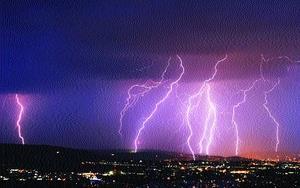Will the new British Standard on lightning protection affect you? Mike Henshaw summarises its key requirements.
In any decade, about one million lightning flashes strike the ground in the UK. Some of these damage buildings and a few kill or injure people or animals, either directly or indirectly, by causing fire and explosions. To help address this risk, a new British Standard has been published on lightning protection.
BSEN 62305 Protection against lightning will run in parallel with the existing standard (BS6651: 1999) for a transitional period and will eventually replace it at the end of August 2008.
There are four parts to the new standard, covering general principles, risk management, physical damage to structures and life hazard and finally electrical and electronic systems within structures.
There are four separate risks that can be addressed depending upon the client's requirements:
- risk of loss of human life
- risk of loss of service to the public
- risk of loss of cultural heritage
- risk of loss of economic value.
The risk of loss of cultural heritage and risk of loss of economic value are considered for the first time within the new standard.
A risk assessment must be undertaken for each of the risks the client wishes to address in order to determine what level of protection is required, if any, and what protection measures need to be applied in order to reduce the risk to a tolerable level. This is a new practice.
The risk assessments require certain information in addition to that already demanded under the current standard: dimensions and use of the structure to be protected; type and characteristics of equipment to be protected; type of cabling used for power and telecommunications/data systems; characteristics of power and telecommunications lines feeding the structure; characteristics of the structure feeding the lines; relative location of the structure and its services to other structures; type of floor surfaces (for example, concrete, asphalt etc); risk of fire and any special hazards; provision for fire protection; any inherent or specifically built in spatial shielding against electromagnetic influences; various items of financial information if requiring a calculation of economic value.
This information is much more detailed than any current requirement and is vital to an accurate risk assessment.
Such assessments will ascertain what level of protection, if any, you require and determine what measures are needed to protect against the risks presented. The information necessary to produce precise assessments, designs and costs may be severely delayed due to existing tendering practices in the UK, unless lightning protection specialists are involved much earlier in the design phase of the project.
Finally, there is a much greater emphasis on equipotential bonding or ensuring separation distances between the protection system and any conductive building services. This new requirement will involve significant coordination of the lightning protection system with other building services.
Mike Henshaw is managing director of Omega Red Group, specialists in the design, installation and maintenance of earthing and lightning protection systems.
Source
Building Sustainable Design





















No comments yet